Mushroom cultivation, an intricate interplay of science and nature, faces challenges from various pests and diseases. This blog elucidates the diverse types of mushrooms, their nutritional significance, and the pervasive issues of pests and diseases in cultivation. Embark on a journey through the intricacies of mushroom cultivation, exploring effective natural and organic pest and disease management remedies.
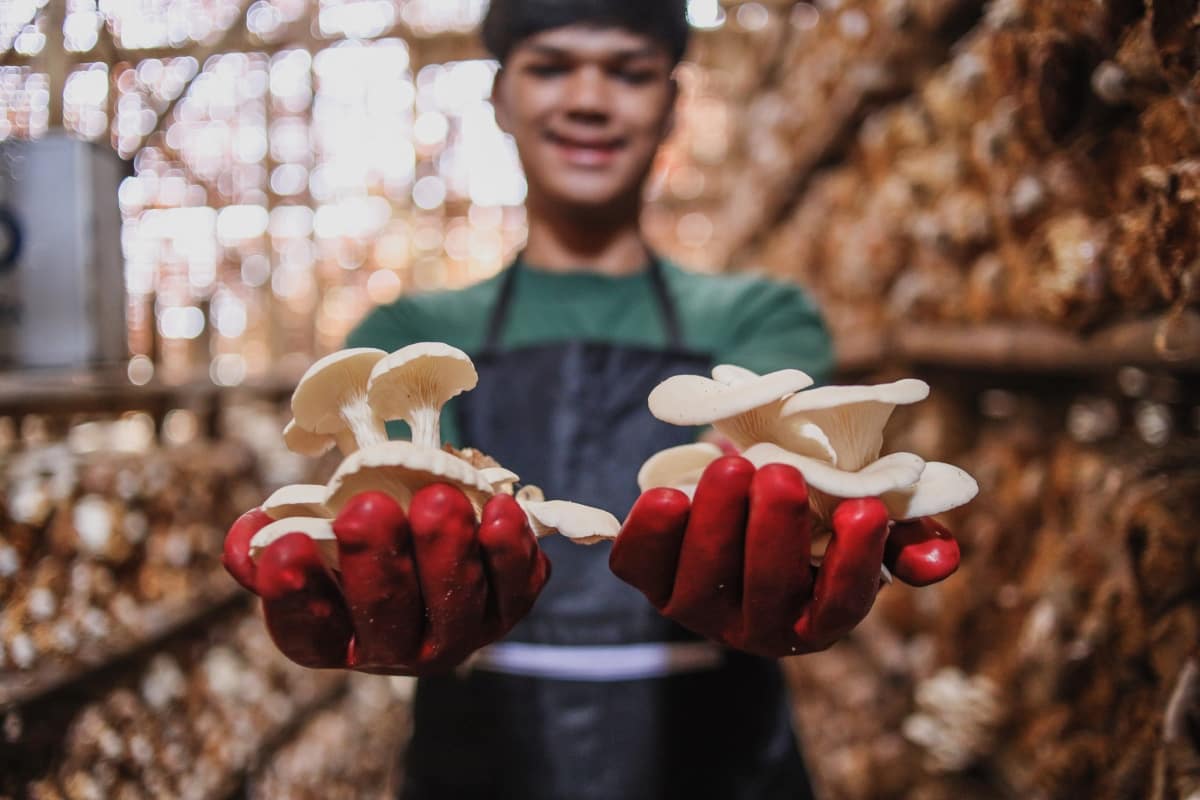
How to Control Pests and Diseases in Mushrooms
Types of Mushrooms
- Paddy Straw Mushroom (Volvariella sp.)
- Oyster Mushroom (Pleurotus sp.)
- Button Mushroom (Agaricus sp.)
- Milky Mushroom (Calocybe sp.)
- Shiitake Mushroom (Lentinus sp.)
- Jew’s Ear Mushroom (Auricularia sp.)
Common Mushroom Pests and Diseases
Mushrooms, particularly white button mushrooms, are susceptible to pests and diseases that can significantly impact crop quality and yield. The most prevalent fungal disease, Verticillium dry bubble, manifests as globe-like masses of mushroom tissue. Effective management involves maintaining cleanliness, preventing spawn overgrowth, and utilizing easily pinning strains.
Green Mold Woes: Green mold is a widespread concern affecting Agaricus, Pleurotus, and shiitake mushrooms. Identified by a mycelium layer transitioning from white to green on the casing surface, it poses a substantial threat to yield. Robust strategies for green mold control are vital for sustained mushroom production.
Fly Infestations
Phorid and Sciarid Flies
Phorid and sciarid flies pose significant challenges in the mushroom industry. Attracted by the scent of growing mycelium, female phorid flies lay eggs in compost or casing. Although their impact on crop economics has yet to be fully understood, their presence necessitates vigilant management. Sciarid larvae feed on mycelium, causing damage to mushroom tissue. Adult sciarid flies may not directly harm mushrooms but can carry pathogens, emphasizing the need for thorough control measures.
Management Strategies
While phorid flies outnumber sciarids, their damage to mushroom crops is comparatively lower. Effective management practices, such as those detailed in Penn State Extension’s On-Farm Management of Phorid Fly Infestations, are crucial for mitigating the economic impact of fly infestations.
Integrated Pest Management (IPM) in Mushroom Production
IPM Practices
Integrated Pest Management (IPM) practices play a pivotal role in preventing and reducing the spread of pests, safeguarding both production quantity and quality. Exclusion techniques, preventing pests from entering new spaces or escaping from existing ones, are critical to IPM. The PA Mushroom Integrated Pest Management Handbook by Penn State Extension is a valuable resource, offering theoretical insights and practical guidance for growers and researchers alike.
In case you missed it: How to Grow Cordyceps Mushrooms: Profitable Cultivation Practices and Cordyceps Mushroom Price
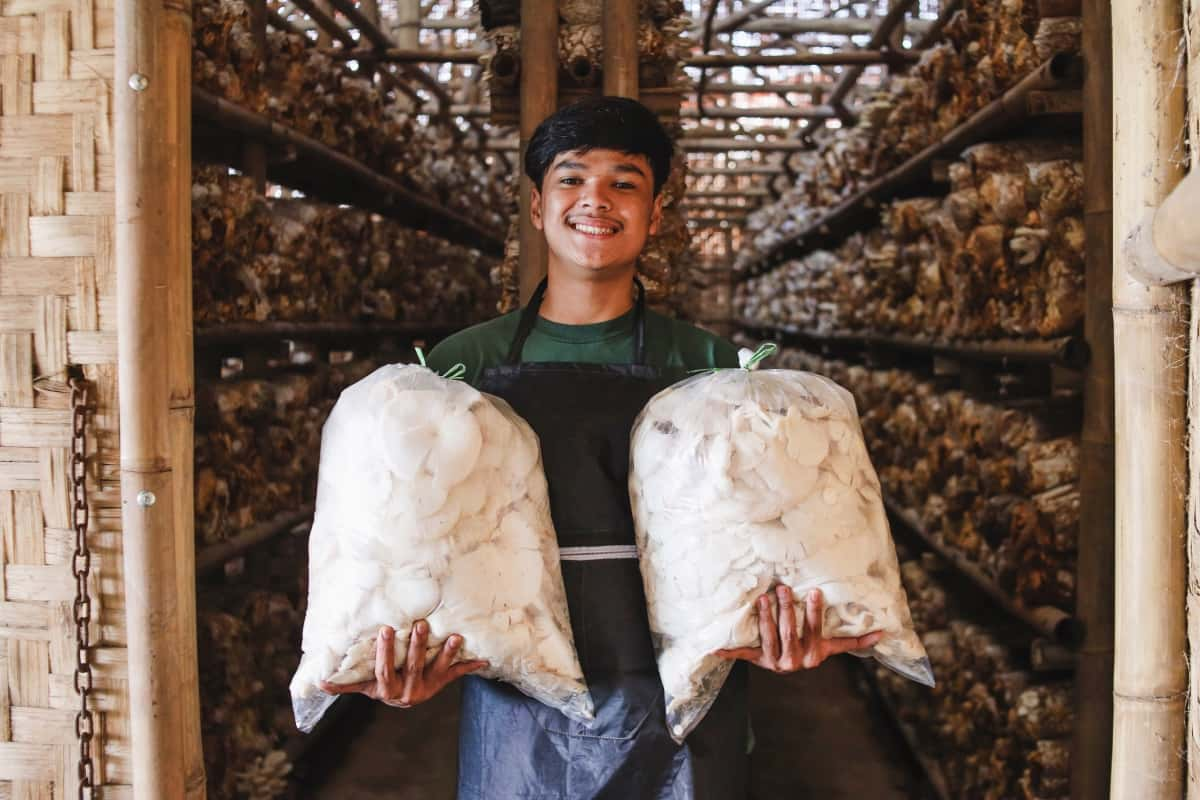
Disinfectants and Sanitizers Usage
Distinct Roles
Disinfectants and sanitizers, often used interchangeably, serve distinct purposes in mushroom production. Disinfectants target disease-carrying microorganisms, finding common use in picking halls and breezeways. Growers must carefully choose disinfectants based on their effectiveness and potential corrosiveness.
Sanitizers for Safety
Sanitizers aim to reduce, rather than necessarily eliminate, microorganisms to safe levels by health codes. Sanitizers are categorized into food-contact and non-food-contact products and are pivotal in maintaining hygiene standards. When selecting sanitizers for different areas within the mushroom production facility, growers should consider the specific application requirements and regulations.
Insect Pests in Mushrooms Cultivation
Flies
- Phorid Fly: Megaselia halterata and Megaselia tamilnodolensis
- Sciarid Fly: Lycoriella malli
- Damage: Larvae feed on mycelium, causing rotting patches. Spread of disease between beds.
- Favorable Conditions: Temperature 16-24°C, moisture content 70% and above.
Beetles
- Black Beetle: Sacphiso manigrofaceatum
- Brown Beetle: Sacphiso mapictummotschulsky
- Damage: Feed on buds and grown mushrooms, transmit bacterial blotch disease.
- Prevention: Fix insect-proof nets and treat newspaper with 0.1% formalin.
Springtails/Columbolas
- Lepidocyrtus cyaneus and Isotoma simplex
- Damage: Feed on mycelium and buds.
In case you missed it: Mushroom Farming Business Plan: Investment, Profit, and Cultivation Steps
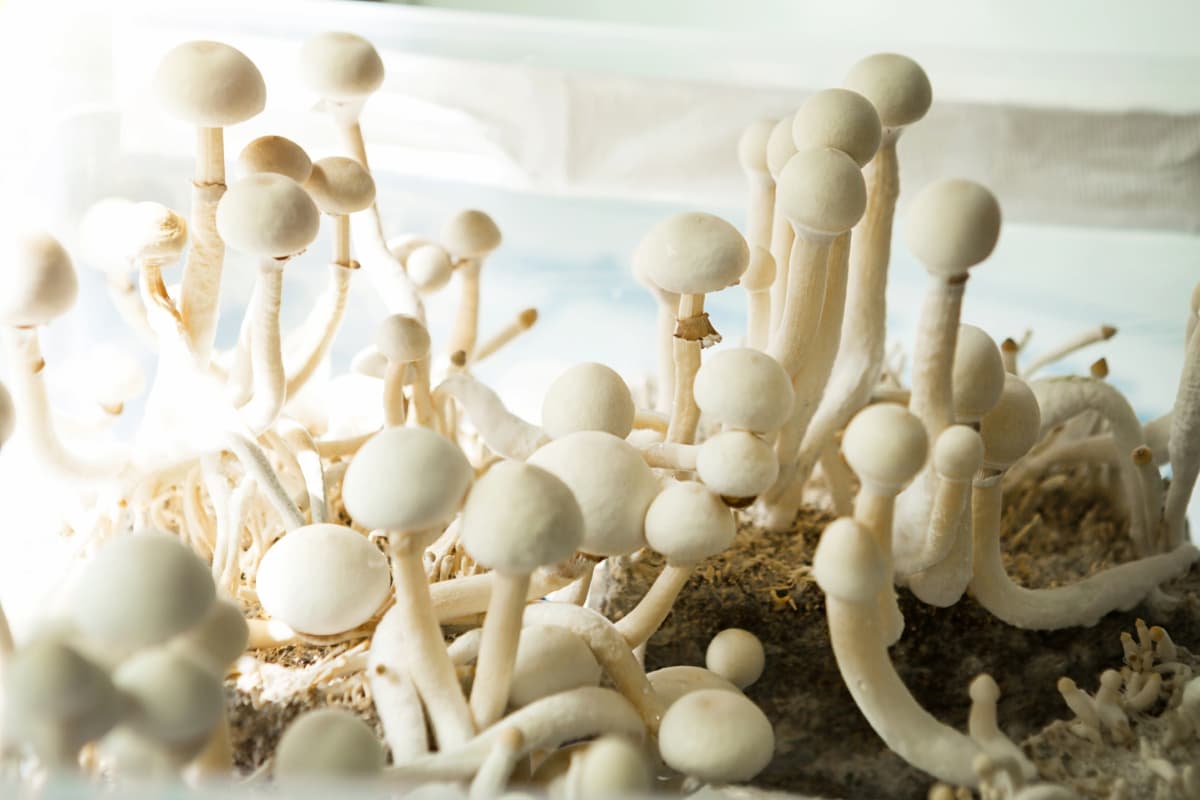
Nematodes
- Ditylenchus mycelophagus and Aphelenchoides composition
- Prevention: Maintain bed moisture at 60-65% and avoid excess water.
Mites
- Tarsonemid Mite: Tarsonemus myceliophagus and T. floriculus
- Tryoglyphid Mite: Tyrophagus lintneri and T. longior
- Prevention: Integrated Pest Management strategies.
Integrated Pest Management (IPM)
- Maintain bed moisture at 60-65%.
- Install insect-proof nets.
- Treat newspaper with 0.1% formalin in button mushroom cultivation.
- Use white insect traps to attract flies.
- Safely apply malathion or dichlorvos for pest control.
Weeds, Moulds, and Diseases in Mushrooms Cultivation
- Ink Cap (Coprinus comatus)
- Management: Remove infected beds immediately and avoid chemical sterilization.
- Green Moulds (Trichoderma viride)
- Management: Use healthy straws, control moisture, and promptly remove infected beds.
Fungal Diseases in Mushrooms
- Dry Bubble (Verticillium malthousei and V. psalliotae)
- Truffle (Pseudobalsamia microspora)
- Mildew/Cobweb (Dactylium dendroides)
- Management: Follow best practices in bed preparation and moisture control.
- Bacterial Blotch/Bacterial Pit/Brown Blotch (Pseudomonas tolassi)
- Management: Control the Tyroglyphus mite population, avoid excess watering, periodic removal of infected beds, and use a water-bleaching powder solution.
Viral Diseases in Mushrooms
- Brown Disease/Watering Stipe/X-Disease/Dieback Disease
- Symptoms: Drumstick-like mushrooms, premature veil opening.
- Management: Diagnose carefully, address environmental factors, and focus on yield improvement.
Use Natural Methods to Deal with Pests and Diseases in Mushrooms
Mushrooms are a nutritious and delicious food crop that can be grown at home or commercially. However, they are susceptible to various pests and diseases, including flies, mites, nematodes, slugs, molds, scars, spots, and rots. To combat these issues, it is recommended to use natural methods that are safe for the environment and human health.
In case you missed it: How to Grow Mushrooms in Coffee Grounds at Home: Steps, Ideas, and Tips for Beginners
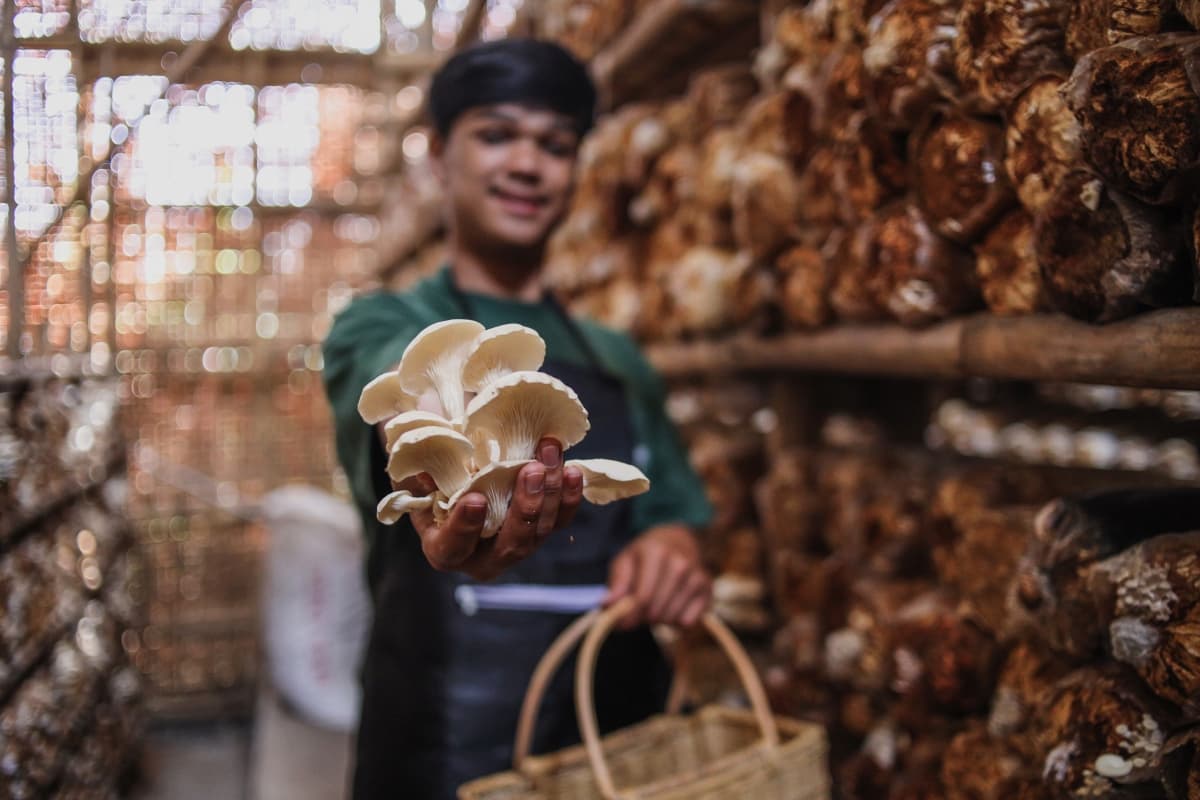
These methods include good hygiene practices, using resistant varieties, introducing beneficial organisms like ladybugs, lacewings, predatory mites, or parasitic wasps, using botanical extracts with insecticidal, fungicidal, or repellent properties, and using physical barriers like traps, nets, screens, or covers.
These methods help reduce the population of pests without harming the mushrooms. Additionally, using essential oils like peppermint, lavender, or rosemary can deter pests from the mushrooms. Overall, implementing these natural methods can help maintain the quality and yield of your mushrooms.
Set up Traps and Barriers to Keep Pests Away from Mushroom Growing Areas
To prevent pest infestation in mushroom-growing areas, it is essential to set up traps and barriers. Fly traps, such as sticky, baited, electric, or light traps, can control flies, damaging the mushroom mycelium, caps, and stems and spreading diseases like molds and blotches. These traps can be coated with a sticky substance, filled with liquid bait, electrocuted when touched, or lured with a light source.
Mite barriers, such as diatomaceous earth (DE), lime powder, or sulfur powder, can be used to control mites, which can cause stunted growth, reduced yield, and poor quality. DE is a fine powder from fossilized algae, while lime powder is an acidic substance that burns the skin of mites and kills them. Sulfur powder is a toxic substance that suffocates mites and inhibits fungal growth. These barriers can be sprinkled around mushroom beds or on the substrate surface to create a barrier against mites.
Use Organic Fungicides to Manage Mushroom Diseases
Use organic fungicides to manage mushroom diseases. Some of the most common diseases that affect mushrooms are green mold, dry bubble, wet bubble, cobweb mold, verticillium wilt, and bacterial blotch. These diseases can spread quickly and ruin your crop if not treated properly.
One way to prevent and control these diseases is to use organic fungicides that are safe for mushrooms and the environment. Some examples of organic fungicides are potassium bicarbonate, hydrogen peroxide, baking soda, vinegar, and garlic extract. These fungicides can be sprayed or applied to the substrate or the mushrooms to kill or inhibit the growth of the pathogens.
Use Essential Oils to Control Pests and Diseases in Mushrooms
Use essential oils to control pests and diseases in mushrooms. Essential oils are natural plant extracts with various properties, such as antibacterial, antifungal, antiviral, insecticidal, and repellent. Some essential oils that can control pests and diseases in mushrooms are neem oil, tea tree oil, peppermint oil, lavender oil, rosemary oil, eucalyptus oil, and clove oil. These oils can be diluted with water or carrier oils and sprayed or applied to the substrate or the mushrooms to deter or kill the pests and pathogens.
Make Sure There’s Good Air Circulation to Prevent Diseases
Make sure there’s good air circulation to prevent diseases. Mushrooms need fresh air to grow well and avoid suffocation. Poor air circulation can create a humid and stagnant environment that favors the growth of molds and bacteria. To ensure good air circulation, you should use fans, vents, windows, or other devices to create air movement in your growing area. You should also avoid overcrowding your mushrooms and space them well to allow airflow between them.
Control Temperature and Humidity to Avoid Pest and Disease Issues
Control temperature and humidity to avoid pest and disease issues. Mushrooms have specific temperature and humidity requirements depending on their species and stage of growth. If the temperature or humidity is too high or too low, it can stress the mushrooms and make them more susceptible to pests and diseases.
In case you missed it: Top 22 Steps/Ways to Boost Mushroom Yield: How to Increase Production, Quality, and Size
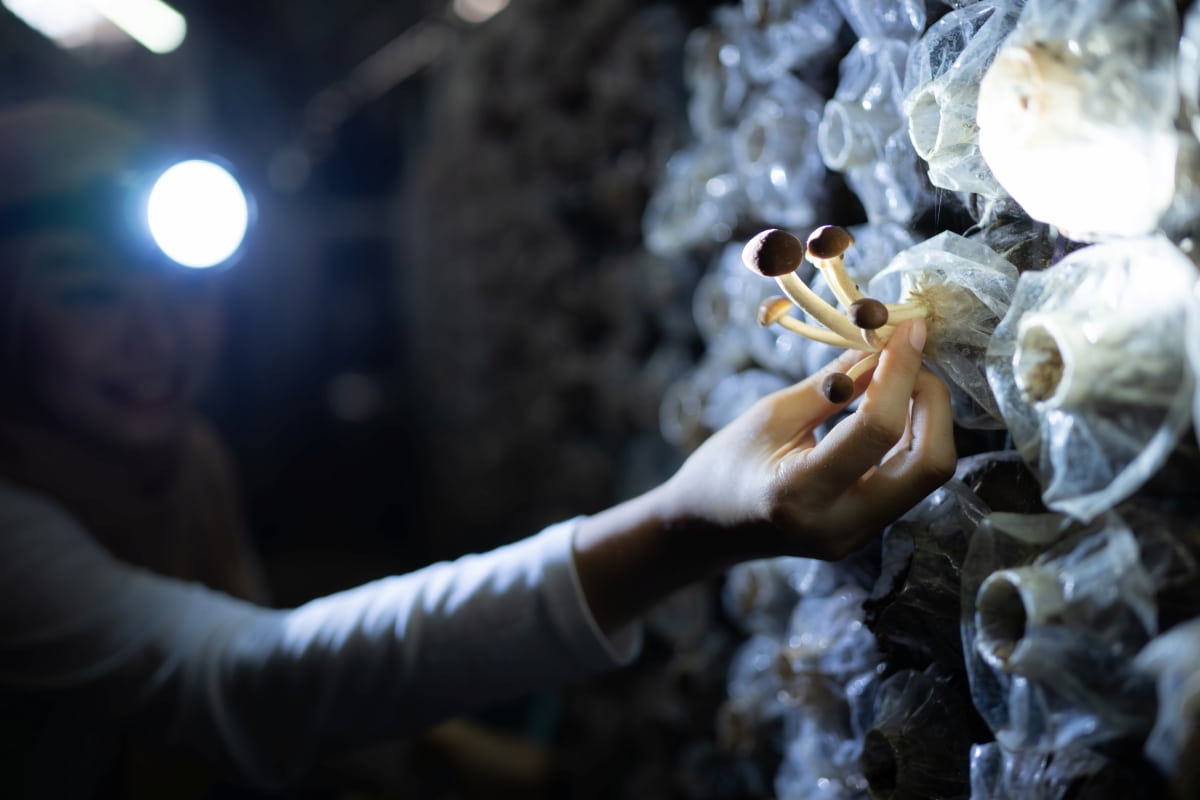
To control temperature and humidity, you should use thermometers, hygrometers, heaters, coolers, humidifiers, dehumidifiers, or other devices to maintain the optimal conditions for your mushrooms. You should also monitor the weather and adjust your settings accordingly.
Boost Mushroom Health with Compost Tea and Other Organic Stuff
Boost mushroom health with compost tea and other organic stuff. Compost tea- liquid fertilizer made from steeping compost in water for some time. Compost tea contains beneficial microorganisms that can improve the soil or substrate quality and enhance the growth and immunity of the mushrooms. Other organic stuff that can boost mushroom health are worm castings, seaweed extract, fish emulsion, molasses, alfalfa meal, blood meal, bone meal, or other organic amendments that can provide nutrients and minerals to the mushrooms.
Neem Oil Can Be a Good Way to Control Pests in Mushroom Farming
Neem oil can be a good way to control pests in mushroom farming. Neem oil made from the neem seeds tree that has insecticidal and repellent properties. Neem oil can control various pests that affect mushrooms, such as fungus gnats, sciarid flies, mushroom flies, mites, nematodes, slugs, snails, and others. Neem oil can be dilute with water soap and sprayed or applied to the substrate or the mushrooms to kill or repel the pests.
Keep Pests and Diseases Away with Quarantine Measures
Keep pests and diseases away with quarantine measures. Quarantine measures are steps to isolate or separate infected or suspicious materials from healthy ones to prevent cross-contamination or the spread of pests and diseases. Quarantine measures include using:
- Separate tools, containers, gloves, clothing, shoes, or other equipment for handling infected materials.
- Disposing of infected materials properly.
- Sterilizing or disinfecting tools or equipment after use.
- Washing hands thoroughly before and after handling materials.
- Keeping new materials away from existing ones until they are tested or verifie.
- Reporting any signs of infection or infestation promptly.
Keep an Eye Out for Pests and Diseases and Deal With Them Early
Keep an eye out for pests and diseases and deal with them early. The best way to manage pests and diseases in mushrooms is to prevent them from occurring in the first place. However, if you encounter any problems, you should act quickly and decisively to deal with them before they worsen.
In case you missed it: Hydroponic Mushroom Farming – Production, Cultivation
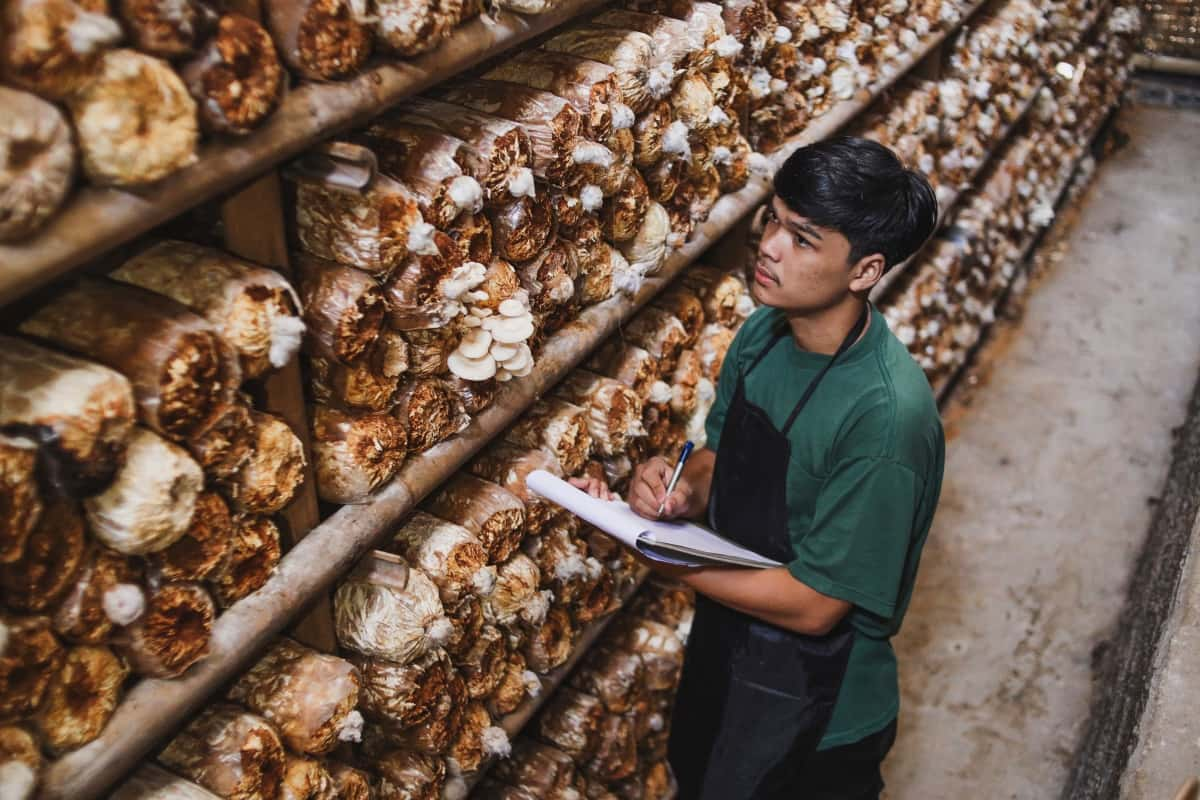
You should inspect your mushrooms regularly and look for any signs of damage, discoloration, deformation, wilting, rotting, or other pest or disease attack symptoms. You should also identify the cause of the problem and apply the appropriate treatment or control method as soon as possible. You should also keep records of your observations and actions to help you monitor the situation and prevent future outbreaks.
Conclusion
Embracing natural and organic remedies is a holistic approach to safeguarding mushrooms from pests and diseases. By prioritizing sustainable and chemical-free interventions, growers foster a balanced cultivation environment. This proactive strategy not only preserves the health of the mushroom crop but also aligns with eco-friendly farming practices, ensuring long-term success.
- Types of Pesticides Used in Agriculture: A Beginner’s Guide
- Economical Aquaculture: A Guide to Low-Budget Fish Farming
- 15 Common Planting Errors That Can Doom Your Fruit Trees
- How to Make Houseplants Bushy: Effective Tips and Ideas
- Innovative Strategies for Boosting Coconut Pollination and Yield
- Pollination Strategies for Maximum Pumpkin Yield
- The Complete Guide to Chicken Fattening: Strategies for Maximum Growth
- Natural Solutions for Tulip Problems: 100% Effective Remedies for Leaf and Bulb-Related Issues
- Revolutionizing Citrus Preservation: Towards a Healthier, Greener Future
- Natural Solutions for Peony Leaf and Flower Problems: 100% Effective Remedies
- Maximizing Profits with Avocado Contract Farming in India: A Comprehensive Guide
- Natural Solutions for Hydrangea Problems: 100% Effective Remedies for Leaf and Flowers
- The Ultimate Guide to Choosing the Perfect Foliage Friend: Bringing Life Indoors
- From Sunlight to Sustainability: 15 Ways to Use Solar Technology in Agriculture
- The Ultimate Guide to Dong Tao Chicken: Exploring from History to Raising
- The Eco-Friendly Makeover: How to Convert Your Unused Swimming Pool into a Fish Pond
- Mastering the Art of Delaware Chicken Farming: Essentials for Healthy Backyard Flocks
- 20 Best Homemade Fertilizers for Money Plant: DIY Recipes and Application Methods
- How to Craft a Comprehensive Free-Range Chicken Farming Business Plan
- Brighten Your Flock: Raising Easter Egger Chickens for Beauty and Bounty
- How to Optimize Your Poultry Egg Farm Business Plan with These Strategies
- Subsidy for Spirulina Cultivation: How Indian Government Schemes Encouraging Spirulina Farmers
- Ultimate Guide to Raising Dominique Chickens: Breeding, Feeding, Egg-Production, and Care
- Mastering the Art of Raising Jersey Giant Chickens: Care, Feeding, and More
- Ultimate Guide to Raising Legbar Chickens: Breeding, Farming Practices, Diet, Egg-Production
- How to Raise Welsummer Chickens: A Comprehensive Guide for Beginners
- How to Protect Indoor Plants in Winter: A Comprehensive Guide
- Ultimate Guide to Grow Bag Gardening: Tips, Tricks, and Planting Ideas for Urban Gardeners
- Guide to Lotus Cultivation: How to Propagate, Plant, Grow, Care, Cost, and Profit
- Agriculture Drone Subsidy Scheme: Government Kisan Subsidy, License, and How to Apply Online
- Ultimate Guide to Raising Araucana Chickens: Breed Profile, Farming Economics, Diet, and Care
- Bringing Hydroponics to Classroom: Importance, Benefits of Learning for School Students
- Ultimate Guide to Raising Polish Chickens: Breed Profile, Farming Economics, Diet, and Care
- Ultimate Guide to Raising Australorp Chickens: Profile, Farming Economics, Egg Production, Diet, and Care
- Silkie Chicken Farming: Raising Practices, Varieties, Egg Production, Diet, and Care
- Sussex Chicken Farming: Raising Practices, Varieties, Egg Production, Diet and Care